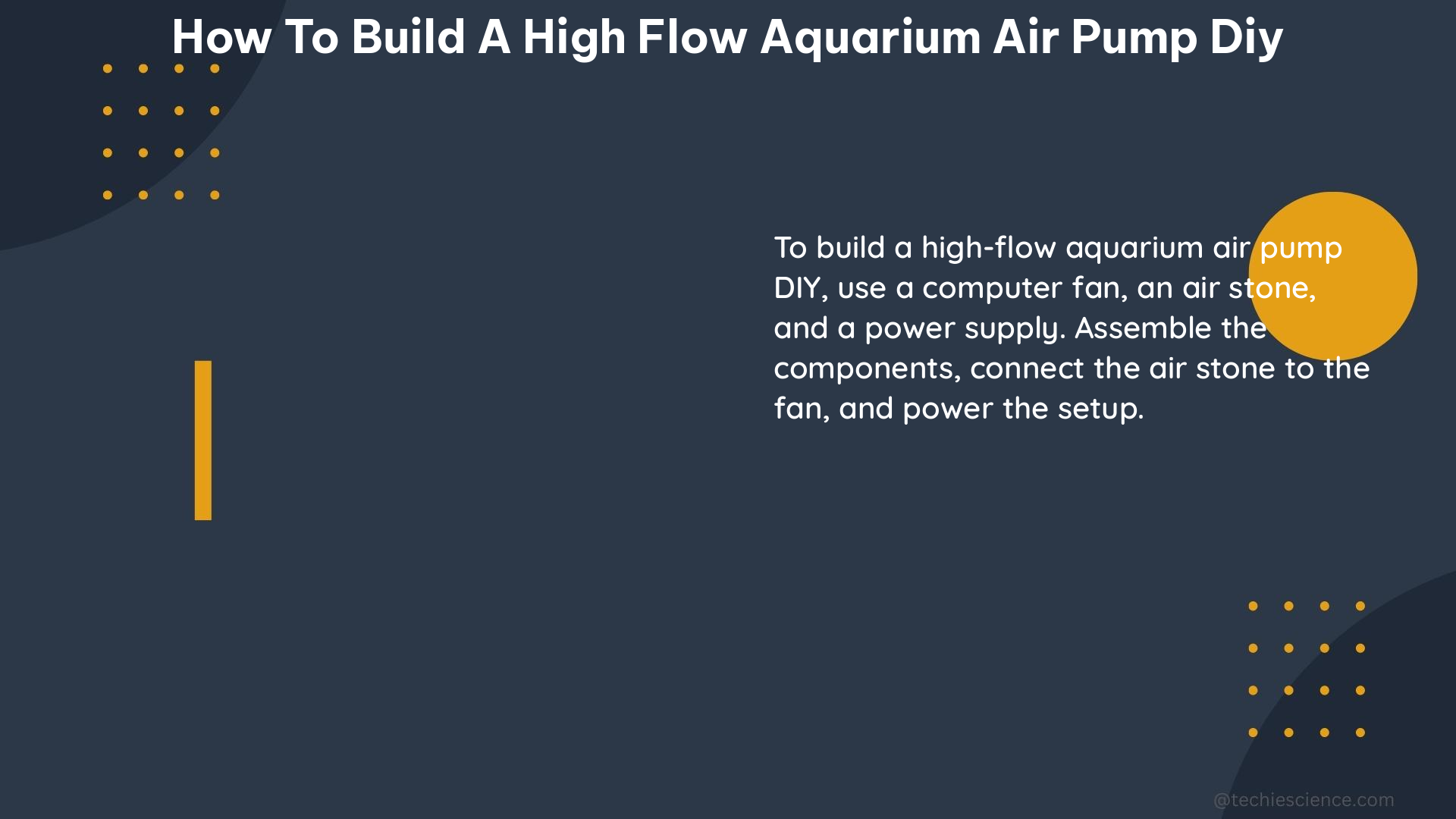Building a high-flow aquarium air pump DIY can be a rewarding project that allows you to customize the airflow and performance to meet the specific needs of your aquarium. This comprehensive guide will provide you with the necessary information and step-by-step instructions to create an efficient and effective high-flow air pump for your aquarium.
Factors to Consider
Airflow Rate
The airflow rate is a crucial factor in determining the performance of your DIY air pump. To measure the airflow rate, you can use a simple method involving a measuring cup, a tank of water, and a known time period. Fill a measuring cup with water, turn on the air pump for one minute, and collect the bubbles in the measuring cup. Measure the volume of water displaced and divide it by the time to get the flow rate in liters per minute (LPM). Ideally, you want an air pump with a flow rate of at least 4 LPM to create a strong current in a 20-gallon tank.
Power Source
For your DIY air pump, you can use a 12V DC power supply, which is both safe and energy-efficient. A typical power supply unit (PSU) can provide 12V at 1A to 3A, depending on the pump’s requirements. Make sure to choose a PSU with sufficient power to drive your air pump without overloading the system.
Pump Specifications
The air pump you choose should have a high flow rate and low power consumption. A good example would be a pump with a flow rate of 4 LPM and a pressure of 0.016 MPa, which can create a strong current in a 20-gallon tank.
Materials
Use high-quality, durable, non-toxic, and easy-to-clean materials for your DIY air pump. Some recommended materials include:
– PVC or silicone tubing
– Food-grade valves
– Sturdy plastic or glass container
Noise Level
The noise level of your DIY air pump should be minimal to avoid disturbing you or your fish. You can achieve this by using a quiet motor, proper insulation, and a well-designed air delivery system.
Cost
The cost of building a high-flow aquarium air pump DIY can vary depending on the materials and components used. A basic DIY air pump can cost around $20 to $30, while a more advanced version can cost up to $50 or more.
Step-by-Step Guide

1. Choose a Suitable Container
Select a plastic or glass container with a capacity of at least 2 liters. Make sure the container is sturdy and has a tight-fitting lid.
2. Install the Pump
Choose a high-flow, low-power-consumption air pump and install it securely in the container, ensuring it does not vibrate excessively.
3. Install the Air Delivery System
Use PVC or silicone tubing to connect the pump to the air delivery system. You can use a T-valve or a manifold to distribute the airflow to multiple outlets.
4. Insulate the Container
Apply foam or other insulation materials to the container to reduce noise and prevent heat buildup.
5. Test the Air Pump
Fill the container with water and test the air pump. Measure the airflow rate and adjust the pump settings as needed to achieve the desired performance.
6. Install the Air Pump in the Aquarium
Once you are satisfied with the performance of your DIY air pump, install it in the aquarium. Ensure the air delivery system is submerged and the airflow is directed towards the areas where you want to create a strong current.
By following these steps and considering the various factors, you can build a high-flow aquarium air pump DIY that meets the specific needs of your aquarium and provides a reliable and efficient air circulation system.
References:
- Group-3-DIY-Air-Pump (3) (docx) – CliffsNotes
- How to Make a Mini Air Pump: DIY Air Pump for Fish
- Creating Current with Airpump
- DIY Air Pump for Aquarium
- Is there a relatively inexpensive way to measure airflow?
